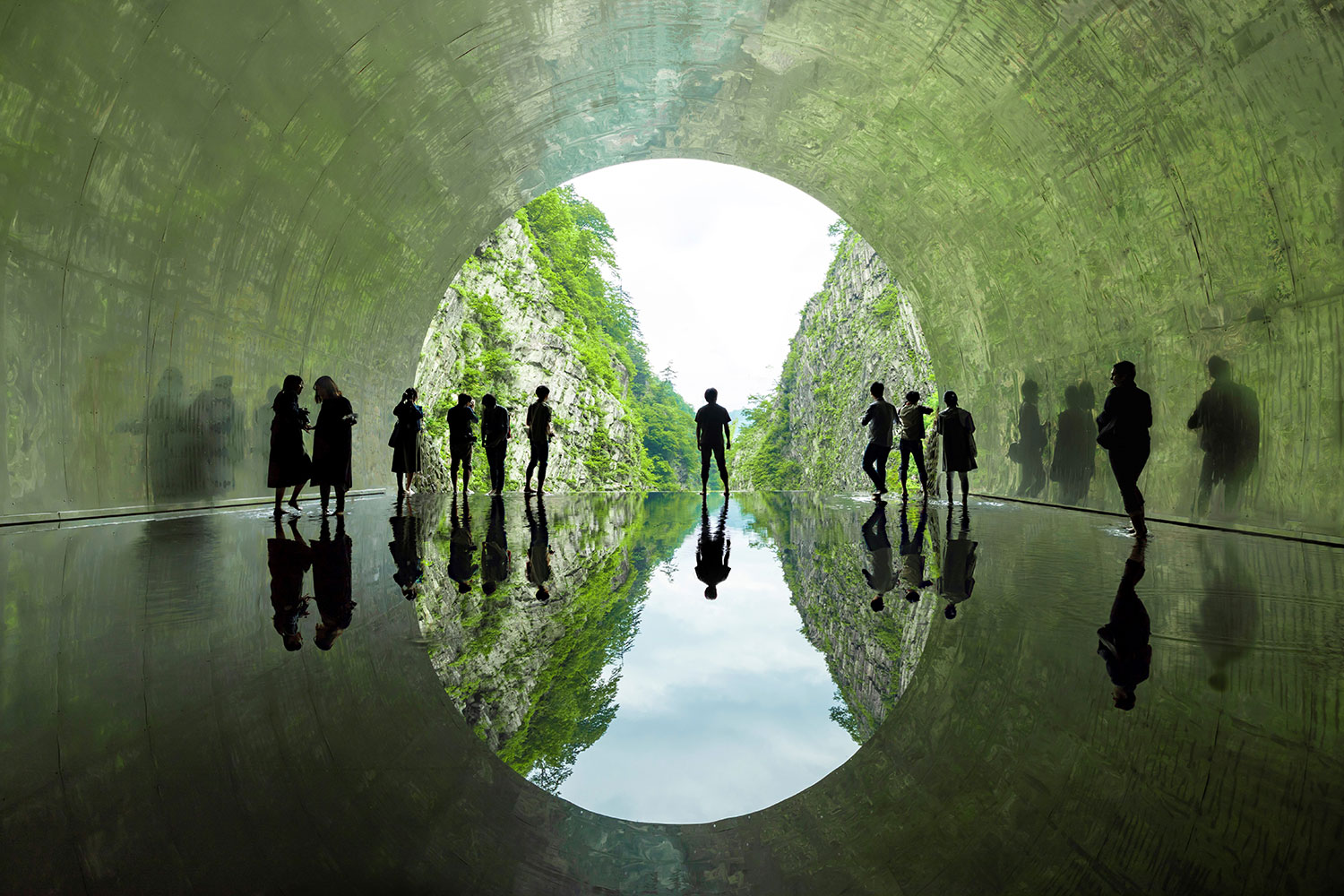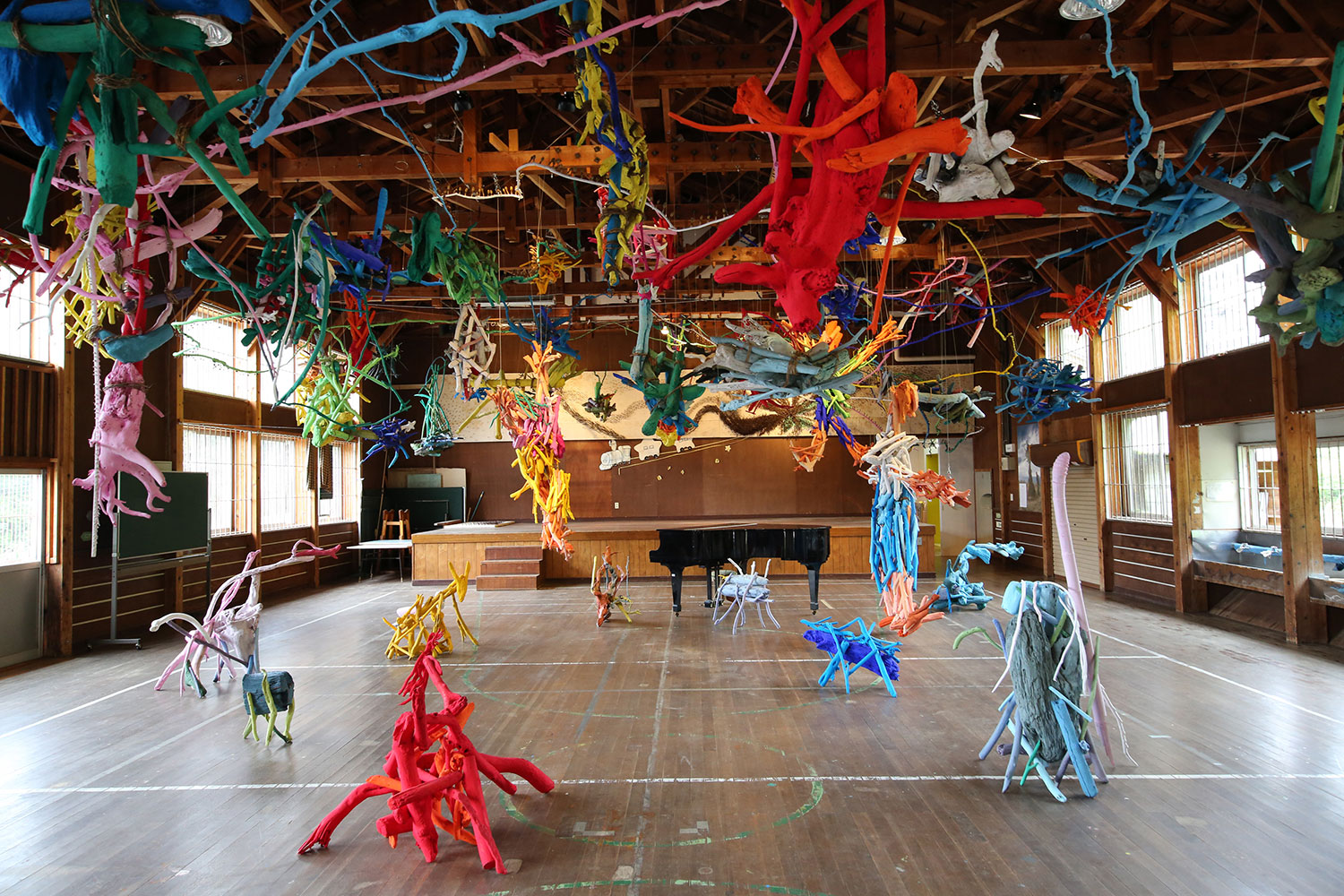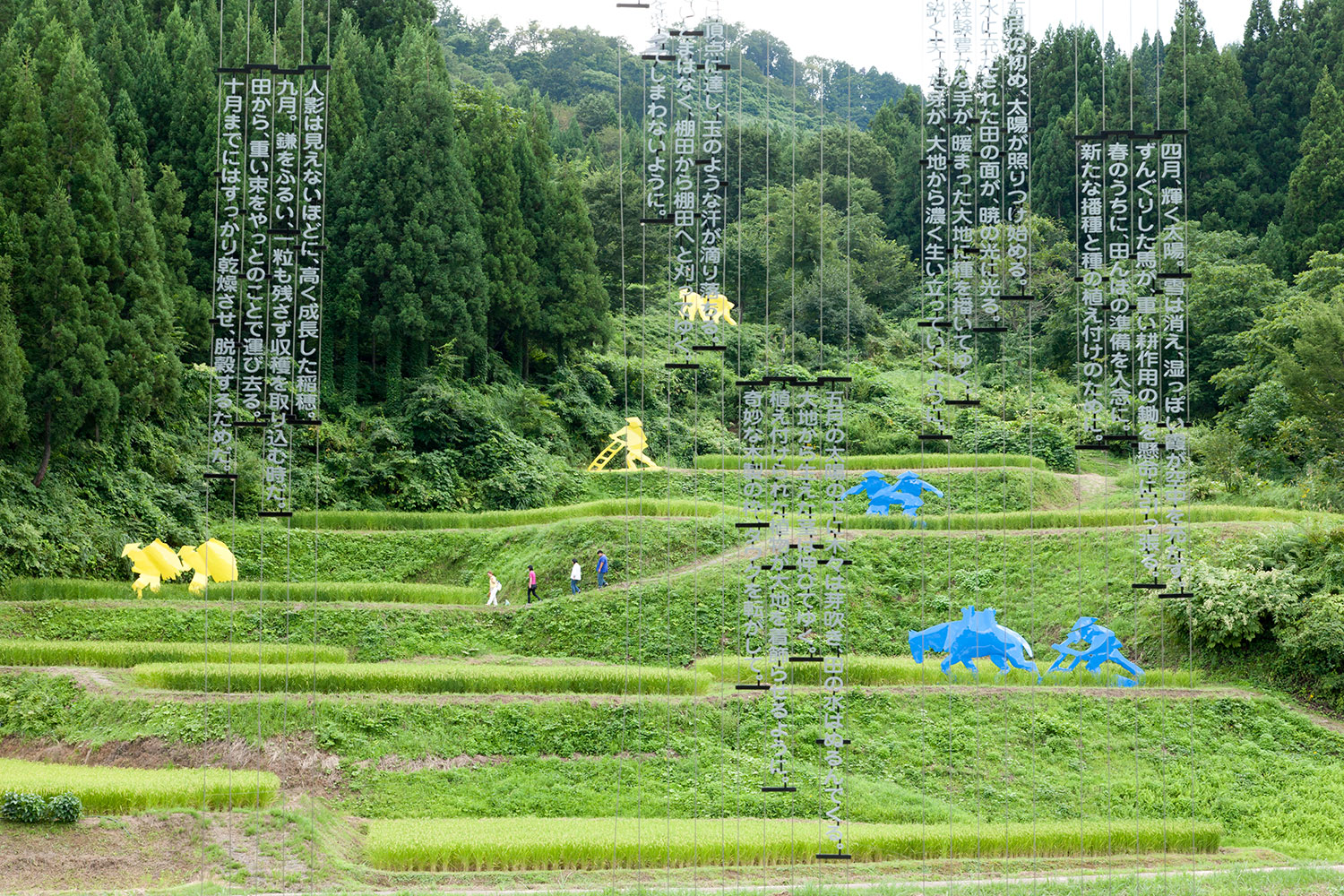
Forest

Ecosystem

Community
An International Art Festival Held on the Natural Stage of a Satoyama
Echigo-Tsumari, in Japan's Niigata Prefecture, is a depopulated and aging region that attracts artists and tourists from all over the world.
Echigo-Tsumari Art Executive Committee
(Niigata Prefecture)

Overview
The city of Tokamachi and the town of Tsunan, where some of the heaviest snowfalls in Japan are reported, is home to the “Echigo-Tsumari Art Field.” Here, amid a vast 760 km2 village forest, the Echigo-Tsumari Art Triennale has been held every three years throughout the summer months since 2000, continuing to exhibit more than 300 contemporary artworks by artists from around the world. In this depopulated and aging area, covered in snow throughout the winter months, this art festival began as a long-term strategy by the local government to help revitalize the region by rediscovering local resources such as nature, climate, and culture through art and showcasing them to the world.
The basic philosophy here is: “Human beings are part of nature.” Artists work together with local residents and volunteer supporters (kohebi-tai) to create works that take advantage of the characteristics of Echigo-Tsumari. Additionally, the event is also characterized by the creation of new value by making use of so-called “negative legacies,” such as vacant houses, abandoned schools, and deserted farmland. During the event period, many tourists across Japan and abroad can be seen traveling throughout the beautiful countryside rich in nature, using art as guideposts and getting to know Echigo-Tsumari’s people, climate, and food culture. The art festival has brought to the region not only economic effects such as job creation and an increase in the number of people interacting with the area but also a sense of purpose in life for the elderly and the enrichment of education in schools.
Successful outcomes
- Incoming customer numbers have continued to increase. The first event in 2000 saw 162,800 people, while by the fourth event in 2009 the numbers had increased to 375,311, and by the eighth event in 2022, the number improved to 574,138.
- The number of works exhibited was 146 at the first event, but this has increased to more than 300 since the third event in 2006.
- The number of participating villages was 28 in the first event, 92 in the 4th, and up to 109 by the 8th.
- The economic effect on the entire prefecture was 10.054 billion yen for the first event (initially, there were many major infrastructure projects such as facility improvement measures, etc.), 3.56 billion yen in the 4th event, and 8.261 billion yen by the 8th event.
- Every year, the kohebi-tai assemble people of all ages from inside and outside Echigo-Tsumari. A total of 901 people participated in the 8th event, and about 40% of these were from overseas.
- Internationally renowned artists such as Yayoi Kusama, Ma Yansong, Ilya and Emilia Kabakov, and James Turrell participate.
- Regional art festivals are now being held nationwide in Japan based on the Echigo-Tsumari Art Triennale model.

Art: Bringing out the power of the region and opening up the future
The Echigo-Tsumari Art Triennale, conceived by Tokamachi City and Tsunan Town in 1996, was held for the first time not in 1999 as planned but in the following year. At first, there were many doubters and people in opposition to the local government’s unprecedented strategy to help revitalize the hilly and mountainous areas of the region with contemporary art. “We needed time to build a consensus,” says Mr. Tadashi SAIKI, current executive director of the Echigo-Tsumari Art Executive Committee (section chief of the Tourism and Culture Promotion Division of the Tokamachi City Industry and Tourism Department).
The person who persuaded local residents was Mr. Fram KITAGAWA, an art director from Niigata Prefecture and general director of the Echigo-Tsumari Art Triennale. “This will become the core of community development in the 21st century,” he said, gaining people’s understanding by continuing to convey that contemporary art can expose the contradictions of society and the dangers of nature, while also relaying hope for the future.
The philosophy that has been adhered to since the beginning is “Human beings are part of nature.” This originates from the lives of the people of Echigo-Tsumari, who have been rice farmers amid a harsh natural environment where snow could pile up to 2 meters in winter, living in close-knit communities and searching for ways to connect people with nature over long periods. In terms of management, production, and work management, collaboration across regions, generations, and genres is a point of emphasis. The continued goal has always been to help make the people of Echigo-Tsumari feel proud.

Mr. Saiki comments further: “Philosophy and collaboration with the local community have brought the art festival to fruition. Even if you start small, people are the focus of importance. The persistent continuation of the festival with key persons in the community and the effort that the head of the local government has continuously promoted the strategy of the art festival as one of the pillars of the community’s revitalization have been successful.”
Although there have been times when the events encountered financial difficulties in the early stages, the significance of the efforts made was recognized, and from time to time the organizers received support from businesspeople and subsidies from Japan’s Agency for Cultural Affairs. Currently, the festival is run on approximately 600 million yen (2022), which includes admission fees, donations/sponsorships, local government contributions, and national subsidies. Securing sustainable financial resources and developing and further securing human resources will continue to be issues.

The efforts are not limited to the period of the event. In addition to displaying approximately 200 permanent works, the event also holds special exhibitions, performances, and workshops every year. In addition, selling rice grown in the terraced rice fields as depicted in the background of some of the artworks, the event works to restore abandoned farmland. In new endeavors, effort is made for collaboration with companies and for holding workshops in Echigo-Tsumari where people can experience the power of discovery, story planning, and mediating the power of art, as well as for utilizing art for innovation in business settings. The challenge of expanding the possibilities of art festivals continues.
Echigo-Tsumari Art Triennale
Echigo-Tsumari Art Executive Committee
https://www.echigo-tsumari.jp/en/
Back to Home




